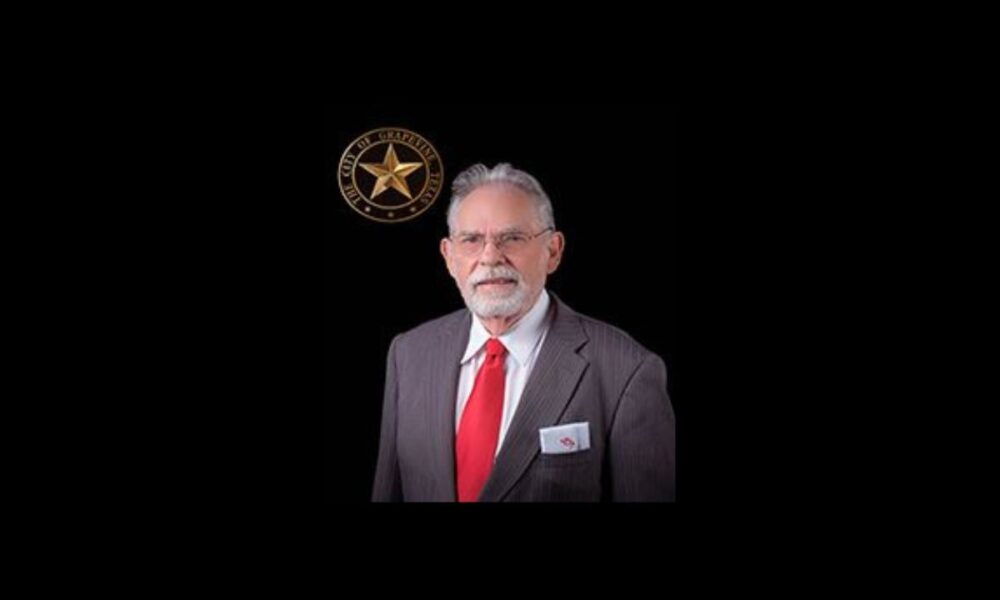The Grapevine-Colleyville Independent School District (GCISD) has publicly pushed back against Mayor William D. Tate and the Grapevine City Council, calling their recent claims about the district’s finances “factually incorrect.”
The district encouraged city officials on Wednesday to base their discussions on “accurate, factual information,” especially as it confronts significant budget challenges and potential school consolidations.
In a sharply worded, four-page letter dated October 8, GCISD School Board President Shannon Braun, Superintendent Dr. Brad Schnautz, and two senior administrators said they were “surprised” by statements in a council letter signed by Tate and six other Grapevine City Council members earlier this week.
“The sharing of incorrect financial information by city leadership undermines the necessary work being done and erodes public trust,” GCISD’s leadership jointly wrote. “We formally request that the City of Grapevine use the correct financial information provided here when communicating with the community regarding district affairs.”
The district’s response follows a tense series of exchanges between the mayor and district leadership that have been ongoing since mid-September, when Braun and Schnautz reportedly met privately with Tate to discuss declining enrollment and school consolidations. Braun later alleged in an email to Tate obtained by The Dallas Express that Tate “threatened” her during that meeting, repeatedly warning her that she had “created an enemy” and promising to “run [her] out of town.”
Tate, who has served as Grapevine’s mayor for more than 40 years, acknowledged in a written reply that the meeting grew heated. “I tried to reason, I tried to offend you and I tried to intimidate you to get your attention,” he wrote in a response obtained by DX.
The mayor raised several objections to closing schools, some of which were politically focused, while others were related to infrastructure. Tate said, the “sidewalks and thoroughfares are in the wrong place” to accommodate an increase in traffic that could follow school closures.
City Council Letter Raises Open Meetings Questions
The latest clash came after the Grapevine City Council issued a formal letter on October 6, urging GCISD to “start from scratch” on its Education Master Planning Committee (EMPC) process and reconsider school closure options.
That letter, printed on city letterhead and signed by all six members of the council, claimed the district “paid off unused bonds,” raised concerns about the committee’s composition—arguing it was dominated by Colleyville residents—and suggested the district explore raising additional “copper penny” tax rates before shuttering campuses.
However, it remains unclear whether the council’s joint letter was created in compliance with the Texas Open Meetings Act, which prohibits a quorum of elected officials from discussing or approving public business outside a posted meeting.
A quorum of members can not “discuss, create and/or sign a group letter or document concerning public business” without following Open Meetings procedures, according to the Texas Municipal League’s guide “Texas Open Meetings Act Laws Made Easy.”
The guide also states, “it may be a violation of the Act if the members meet or communicate by phone, memo, email or social media [citation omitted] in numbers less than a quorum with the specific intent of circumventing the Act regarding a group letter or document.”
Agendas for the council on the city website do not list any public meetings on education prior to the letter being sent to the district on October 6.
GCISD’s Rebuttal
In its written response, GCISD sought to correct what it described as a series of inaccuracies.
Among them:
- The district said it never paid off “unused bonds”, as the city’s letter claimed, but instead refinanced existing debt to save taxpayers more than $12 million in interest.
- It clarified that bond funds cannot be used legally for day-to-day expenses, such as salaries, which make up roughly 87% of the district’s maintenance and operations budget.
- GCISD disputed Tate’s assertion that the district received $14 million in new state funding, saying the actual increase was closer to $6.2 million, much of which was mandated for teacher raises.
- The district leadership also explained that any “copper penny” tax increase would send roughly 62% of the new revenue back to the state through the school finance “recapture” system, leaving the district with only 38 cents of every dollar.
GCISD’s response further noted that it has already reduced 146 full-time positions through attrition since 2022, expanded virtual enrollment, and passed a voter-approved tax rate election last year that generated $6 million in additional operating revenue.
Declining Enrollment and the Road Ahead
While the public has grown increasingly aware of potential school closures, the Education Master Planning Committee (EMPC) has not yet issued a formal recommendation to the board. That recommendation is not expected until late fall, according to district officials.
The district’s own 2024–2025 demographics report indicates that many GCISD schools are now operating far below capacity, a result of various factors, including declining enrollment linked to lower birth rates, aging neighborhoods, and competition from private and charter schools.
“We may make structural changes, and we may adjust the campuses students attend,” GCISD leaders wrote. “No matter how many schools we have, it does not change our commitment to the GCISD family.”
Tate and the city’s general counsel have not yet responded publicly to the district’s latest letter or to the circumstances surrounding the city’s letter.


